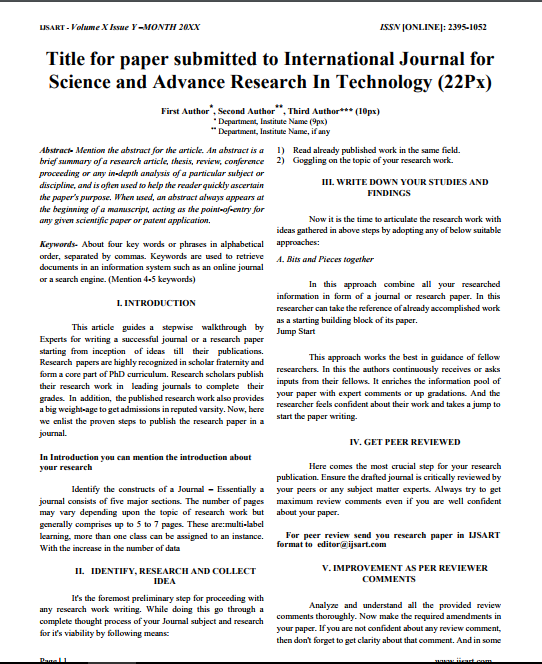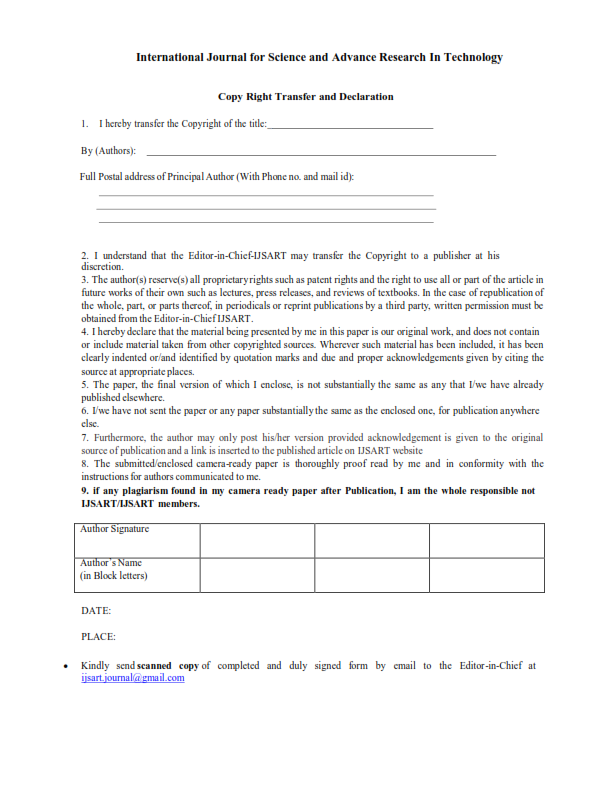Impact Factor
7.883
Call For Paper
Volume: 11 Issue 06 June 2025
LICENSE
Advanced Secure File Access In Cloud Storage Using Physical Token And Dynamic Key
-
Author(s):
Mr.P.Logaiyan | Janaki .V
-
Keywords:
-
Abstract:
With The Growing Reliance On Cloud Storage For Handling Sensitive And Confidential Data, Traditional Authentication Mechanisms Such As Passwords And Static Keys Are Proving To Be Increasingly Vulnerable To Security Breaches. Cyberattacks Exploiting Stolen Credentials, Phishing, And Brute-force Techniques Have Made It Clear That A More Robust And Multi-layered Approach Is Essential. This Project Introduces An Advanced Authentication And Access Control Framework That Leverages Physical Tokens And Dynamic Key Generation To Provide Significantly Enhanced Security For Cloud File Access. The Proposed System Utilizes A Two-factor Authentication Mechanism Where Access To Encrypted Files Stored In The Cloud Is Granted Only When Both A Physical Token And A Dynamic Cryptographic Key Are Successfully Verified. The Physical Token—such As A USB Security Key, Smart Card, Or Hardware Token—contains A Unique Identifier That Is Registered And Verified During Access Attempts. Simultaneously, A Dynamic Key Is Generated Using Time-based Algorithms (e.g., TOTP - Time-based One-Time Password), Which Must Match A Server-side Generated Key, Ensuring Real-time Synchronization And Reducing The Risk Of Replay Attacks. To Ensure Data Confidentiality And Integrity, All Files Are Encrypted With The AES-256 Algorithm Before Being Uploaded To The Cloud. This Ensures That Even If The Cloud Storage Is Compromised, The Contents Of The Files Remain Unintelligible Without Proper Decryption Keys. The Encryption Keys Themselves Are Securely Managed And Can Only Be Accessed During A Valid Authentication Session Involving The Correct Token And Dynamic Key. The System Thus Creates A Secure Boundary Around The File Access Workflow, Offering A Strong Defense Against Unauthorized Access And Data Leaks. Moreover, The Use Of Dynamic Keys Introduces A Temporal Element To Security, Where Access Credentials Expire Quickly, Minimizing The Window Of Vulnerability. The Physical Token Ensures That Access Cannot Be Achieved Remotely Without Possession Of The Registered Device. This Combination Of "something You Have" (the Token) And "something That Changes" (the Dynamic Key) Aligns With Modern Zero-trust Security Models And Offers A Practical And Scalable Solution For Both Individuals And Organizations Storing Sensitive Information In The Cloud. In Conclusion, The Project Presents A Comprehensive And Future-proof Security Mechanism For Cloud File Access That Addresses Majorvulnerabilities Present In Conventional Systems. By Integrating Physical Hardware Authentication With Dynamic Time-sensitive Key Verification And Strong Encryptionprotocols, The Systemsignificantly Raises The Standard For Data Security In Cloud Environments. It Is Especially Suitable For Sectors That Demand High Confidentiality Such As Healthcare, Finance, Defense, And Enterprise IT Services. This Multi-layered Security Approach Ensures That Even If One Authentication Method Is Compromised, Unauthorized Users Cannot Access The Stored Files. The Dynamic Key Changes With Every Access Attempt, Adding An Extra Layer Of Protection Against Brute-force Attacks And Unauthorized Duplication. This System Can Be Widely Used In Various Industries, Including Healthcare, Finance, Government, And Corporate Sectors, Where Secure Storage And Controlled Access To Sensitive Data Are Critical. Financial Institutions Can Use It To Safeguard Confidential Transactions And Client Data. Government Agencies Can Implement It For Classified Document Storage, While Corporations Can Secure Intellectual Property And Business-critical Files. Its Implementation Ensures That Only Authorized Individuals With The Correct Physical Token And Dynamic Key Can Retrieve And Decrypt Files, Reducing The Risk Of Data Breaches And Cyber Threats. The Development Of This Project Leverages HTML And Bootstrap (CSS) For The Front-end, Ensuring A Visually Appealing And Responsive Design. On The Backend, Java And MySQL Have Been Employed To Establish A Robust Foundation For Data Management And System Functionality.
Other Details
-
Paper id:
IJSARTV11I6103763
-
Published in:
Volume: 11 Issue: 6 June 2025
-
Publication Date:
2025-06-09
Download Article


